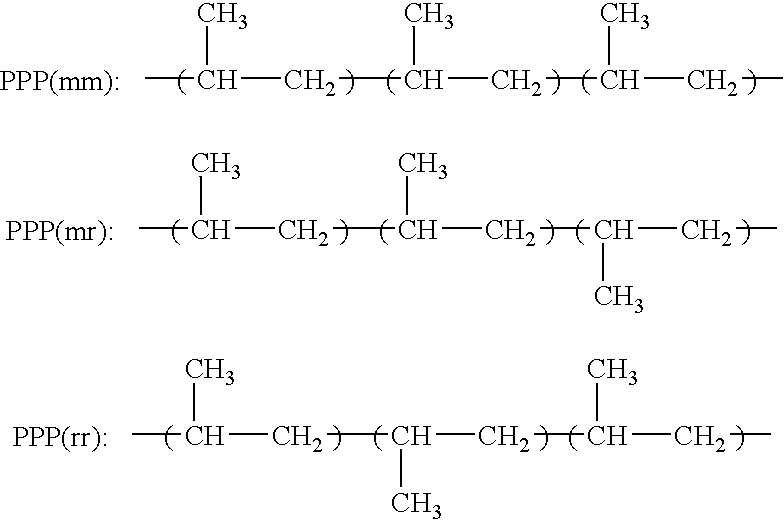Polypropylene based fibers and nonwovens
a polypropylene and non-woven technology, applied in the field of polypropylene compositions and articles, can solve the problems of polyolefin articles, polypropylene films that are only smooth such as glass, and can have poor hand, and disadvantages of additional fabrication processing steps
- Summary
- Abstract
- Description
- Claims
- Application Information
AI Technical Summary
Benefits of technology
Problems solved by technology
Method used
Image
Examples
examples
[0322] The present invention, while not meant to be limited by, may be better understood by reference to the following examples and tables.
[0323] Blends of mPP and fluids were prepared by melt-mixing in a single-screw compounding extruder (Extruder Method). 25 gsm (grams per square meter) basis weight spunbond fabrics were obtained at a pilot spunbond line at throughput of 0.4 grams per hole per minute (ghm). The fluids demonstrate the ability to provide substantial softness improvement in spunbond nonwoven fabrics, as provided by the lower handle-o-meter measurements in Table 5. The plasticized polyolefins can provide an improvement in handle-o-meter measurements, but also maintain the necessary tensile strength, tear resistance and fabric uniformity.
[0324] Other blends of znPP, mPP and fluids were prepared by melt-mixing in a single-screw compounding extruder (Extruder Method). 34 gsm basis weight fabrics were produced at different throughputs and their softness measured using a...
PUM
| Property | Measurement | Unit |
|---|---|---|
| pour point | aaaaa | aaaaa |
| viscosity index | aaaaa | aaaaa |
| Kinematic viscosity | aaaaa | aaaaa |
Abstract
Description
Claims
Application Information
 Login to View More
Login to View More - R&D
- Intellectual Property
- Life Sciences
- Materials
- Tech Scout
- Unparalleled Data Quality
- Higher Quality Content
- 60% Fewer Hallucinations
Browse by: Latest US Patents, China's latest patents, Technical Efficacy Thesaurus, Application Domain, Technology Topic, Popular Technical Reports.
© 2025 PatSnap. All rights reserved.Legal|Privacy policy|Modern Slavery Act Transparency Statement|Sitemap|About US| Contact US: help@patsnap.com



